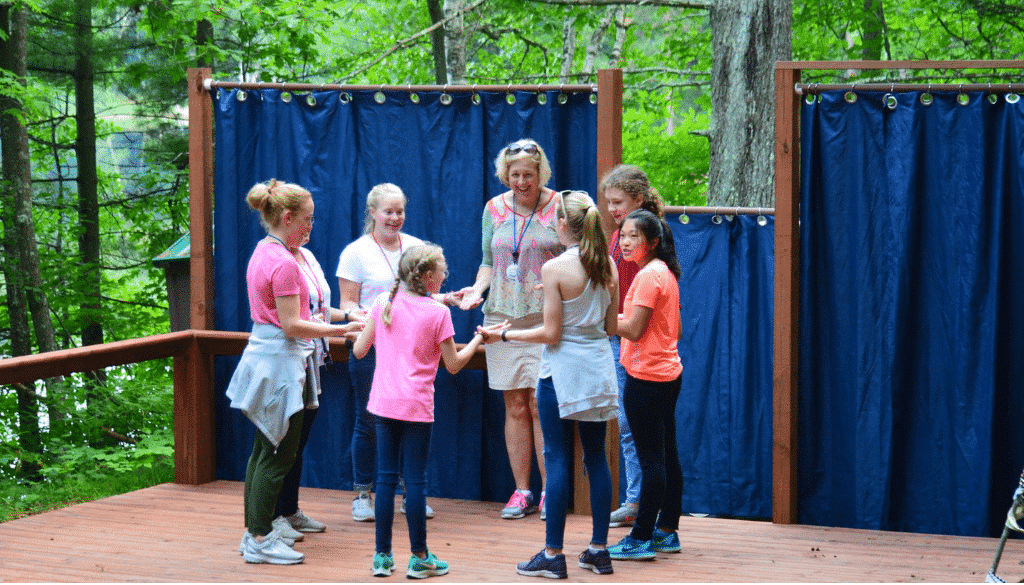Sunday Snippet: Overcoming Shyness
About shyness and shy children
Shy behavior is normal in babies and children.
For example, a baby might cling to their parents, cry in social situations, or physically try to avoid social interaction by hiding their head, moving or turning away, or shutting their eyes.
A preschooler might not want to talk when unfamiliar people speak to them. They might hide behind a parent, or avoid joining in games.
A school-age child might avoid answering questions in class, have trouble making friends, prefer to sit back and watch others play or avoid new activities.
There’s nothing wrong with shyness.
All children are different, and some children are shyer than others. It’s just part of their temperament, which is the unique way they interact with the world.
Children who seem shy often ‘warm up’ as they get to know a person or situation. This means it’s better to describe these children as ‘slow to warm up’ rather than ‘shy’. Labeling a child as ‘shy’ can make them feel like there’s something wrong with them, or there’s nothing they can do about their shyness.
Supporting your child with shyness
Shyness doesn’t always go away over time, but children can learn to be more confident and comfortable interacting with other people. These tips can help.
Tips for babies and young children
- Give your baby time to feel comfortable. Don’t make them go straight into the arms of an unfamiliar adult. Instead, encourage the adult to play with a toy near your child and use a calm voice.
- Stay with your child in social situations, like playgroups or parents groups, while encouraging to explore. As your child gets more comfortable you can gradually move away for short periods. For example, sit on a chair with other adults while your child plays on the floor. You can move back to your child if you need to.
- Let your child know that their feelings are OK and that you’ll help them manage them. For example, ‘I can see you feel a bit scared because you don’t know who’s at the party. Let’s look together before we walk in’.
- Avoid over-comforting your child. Over-comforting sends the message that you think this is a scary situation. And the extra attention might accidentally encourage your child’s shy behavior.
- Praise ‘brave’ behavior like responding to others, using eye contact, trying something new or playing away from you. Be specific about what your child has done – for example, ‘Quinn, I liked the way you said hello to the boy in the park. Did you notice how he smiled when you did that?’
- Try to model confident social behavior so your child can watch and learn from you. For example, when someone says hello to you, always say hello back.
- If other people say your child is ‘shy’, gently correct them in front of your child. For example, ‘Lou takes a little while to warm up. Once she’s comfortable she’ll be happy to play’. This sends the message that you understand how your child feels, and she can deal with the situation when she’s ready.
Tips for school-age children
- Encourage play dates, either at your house or a friend’s house. If your child is invited to a friend’s house, they might feel more comfortable if you go with them at first. You could gradually reduce the time you spend with them at other people’s houses.
- Practice show-and-tell or class presentations with your child at home. This will help your child feel more comfortable when they have to stand up in front of the class.
- Encourage your child to do some extracurricular activities. Try to find ones that encourage social behavior – for example, Scouts, Girl Guides or sport.
- Coach your child before social gatherings – for example, ‘People are going to want to talk with you today. Remember to look at Uncle Dan when he’s talking. If you don’t, he might think you’re not listening to him’.
- Avoid negative comparisons with more confident siblings or friends.
- Help to build your child’s self-esteem by encouraging even small steps towards being less shy.
When shyness might be a problem
Your child’s shy behavior might be a problem if it’s causing them (or you) a lot of distress and/or getting in the way of daily life. For example, shyness might be a problem if:
- you or your child can’t go places because of their shyness
- your child shows signs of anxiety in social situations like parties or school
- your child says they feel lonely but don’t know how to join in with other children
- your child feels they can’t answer or ask questions in class.
Some children who are shy go on to develop anxiety. So if your child’s shy behavior is significant and hard to change, it could help to talk to a professional like your GP, pediatrician or a psychologist.
Shyness or something else?
It’s a good idea to talk to your child and family health nurse (for young babies and toddlers) or your child’s teacher (for preschoolers and school-age children) to consider other possible reasons for your child’s behavior.
For example:
- A child with a language delay might show signs that she wants to speak to people – for example, looking for eye contact or trying to make social connections – but get frustrated that they can’t be understood.
- A child with a hearing impairment might not hear or respond to what people are saying, or have trouble following instructions.
- A child with autism spectrum disorder (ASD) might have difficulty reading social cues, might not play in the same way as other children and might seem uninterested in social contact.
Source: Raising Children





